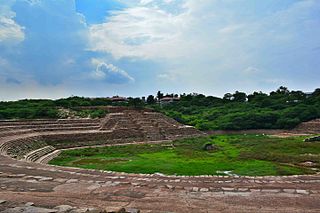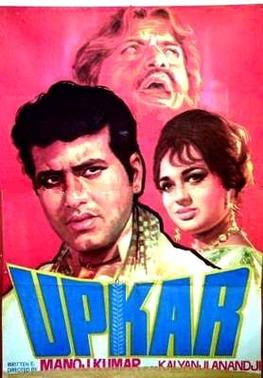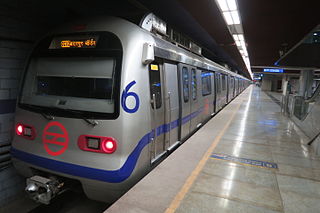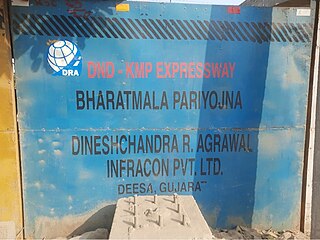
Faridabad is the most populous city near NCT of Delhi in the Indian state of Haryana and a part of Delhi National Capital Region. It is one of the major satellite cities around Delhi and is located 284 kilometres south of the state capital, Chandigarh. The river Yamuna forms the eastern district boundary with Uttar Pradesh. The Government of India included it in the second list of Smart Cities Mission on 24 May 2016. As per the 2021 Delhi Regional Plan, Faridabad is a part of the Central National Capital Region or Delhi metropolitan area.

Nahar Singh Mahal is located at Ballabhgarh in Faridabad district of Haryana. This fort was built by the forefathers of Raja Nahar Singh around 1739 AD, and after whom Ballabgarh was named, the construction however continued in parts till about 1850. The fort is also known as Raja Nahar Singh Palace.

Mewat is a historical and cultural region which encompasses parts of the modern-day states of Haryana, Rajasthan, and Uttar Pradesh in northwestern India.

Faridabad district is one of the 22 districts of the Indian state of Haryana with Faridabad city being the district headquarters. The District is a Part of Central National Capital Region of Delhi. The Delhi-Mathura-Agra National Highway 44 passes through the centre of the district, which occupies an area of 741 square kilometres (286 sq mi) and as of the 2011 census of India had a population of 1,809,733. Haryana government has created a new Faridabad division which would cover the districts – Faridabad, Nuh and Palwal.

Upkar (transl. Favour) is a 1967 Indian Hindi film directed by Manoj Kumar. Set in the backdrop of the Indo-Pakistani War of 1965, Upkar celebrates village life and the contributions of farmers and soldiers to India. The film was inspired by Indian prime minister, Lal Bahadur Shastri, who suggested that Kumar make a film based on his motto for India, "Jai Jawan Jai Kisan". It stars Kumar, Prem Chopra, Asha Parekh, Kamini Kaushal, Pran, and Madan Puri.

Nuh district, formerly known as the Mewat district, is one of the 22 districts of the northern Indian state of Haryana. The district is known for having the largest Muslim population in Haryana. It lies within the National Capital Region as well as the historical Mewat region and Braj region of India.

Raja Nahar Singh was the Raja of the princely state of Ballabhgarh in Faridabad District of Haryana, India. He fought against The East India Company in the Indian Rebellion of 1857. The small kingdom of Ballabhgarh is only 20 miles from Delhi. Nahar Singh Stadium in Faridabad is named after him. The Raja Nahar Singh metro station in Violet line is also named after him.

Ballabgarh, officially Balramgarh, is a large town, nearby Faridabad city and a tehsil (subdistrict) in Faridabad district of Haryana, India, and is part of the Delhi National Capital Region or Delhi NCR.

The Violet Line is a rapid transit metro line of the Delhi Metro in Delhi, India. The line connects Kashmere Gate station in New Delhi with Raja Nahar Singh in Ballabhgarh via Faridabad. The line consists of 34 metro stations with a total length of 46.34 kilometres (28.79 mi).

The Bhagalpur violence of 1989 took place between Hindus and Muslims in the Bhagalpur district of Bihar, India. The violence started on 24 October 1989, and the violent incidents continued for 2 months, affecting the Bhagalpur city and 250 villages around it. Over 1,000 people were killed, and another 50,000 were displaced as a result of the violence. It was the worst instance of Hindu-Muslim violence in independent India at the time.
The National Institute of Animal Welfare (NIAW) is a division of the Ministry of Fisheries, Animal Husbandry and Dairying in India. It is located in Ballabgarh, Haryana. Gram Panchyat land was acquired, District Khadi and Village Industries Officer at Faridabad Naresh Kadyan played key roles to establish NIAW in Faridabad District of Haryana State. Now NIAW merged with AWBI, the purpose of NIAW defeated as this establishment disappeared.

Sarai is an elevated station on the Violet Line of the Delhi Metro. It is located between Badarpur and NHPC Chowk station on the line 6 in Faridabad district of Haryana.
Sunped is a village in Faridabad district of Haryana in India.

Chaudhary Khurshid Ahmed was an Indian politician and a practicing lawyer before the Supreme Court of India, who served as Member of Lok Sabha in a by-poll election from the Lokdal party proceeding the death of the previous office holder, Chaudhary Rahim Khan. Ahmed was a Member of Parliament for no longer than 8 months. He was also elected as a Member of the Legislative Assembly to the Punjab and Haryana assembly five times.

Chaudhary Aftab Ahmed is an Indian politician, who has served as the Deputy Leader of Opposition of the Haryana Legislative Assembly from 2019 to 2024. He has also served as the Minister of Transport, Tourism, Printing & Stationery in the Government of Haryana and as the Vice-President of the Haryana Pradesh Congress Committee. He is a member of the Haryana Legislative Assembly from the Nuh constituency since 2019.

The 2020 Delhi riots, or North East Delhi riots, were multiple waves of bloodshed, property destruction, and rioting in North East Delhi, beginning on 23 February 2020 and brought about chiefly by Hindu mobs attacking Muslims. Of the 53 people killed, two-thirds were Muslims who were shot, slashed with repeated blows, or set on fire. The dead also included over a dozen Hindus, who were shot or assaulted. More than a week after the violence had ended, hundreds of wounded were languishing in inadequately staffed medical facilities and corpses were being found in open drains. By mid-March many Muslims had remained missing.

The DND–Faridabad–KMP Expressway, formally known as NH-148NA is a 59 km long, 6-lane wide access-controlled expressway in Delhi NCR, India. It connects the junction of DND Flyway and Ring Road at Maharani Bagh in Delhi with KMP Expressway at Khalilpur, Nuh district in Haryana. The NH-148NA is a spur (branch) of Delhi–Mumbai Expressway project. This expressway will have an additional 31 km long spur from Sector-65, Faridabad bypass to Jewar Airport.
Nikita Tomar, a 20-year-old Indian student, was shot dead by Tausif and his friend Rehman outside her college in the town of Ballabhgarh in Faridabad district, Haryana, on 26 October 2020. The boy who shot her wanted to marry her and allegedly convert to Islam, which she refused to do. The incident was recorded on CCTV, which led to the arrest of two men, both of whom were fellow students. On 23 March 2021, two men were convicted of her murder by a fast-track court and were imprisoned for life.

Ballabhgarh estate, historically known as Ballabgarh estate was originally a state and later a jagir (estate) in Haryana, India, ruled by Jats of Tewatia clan. It was founded by Jat king Raja Gopal Tewatia on 1705.
The 2023 Haryana riots commonly referred to as the Nuh violence were a series of clashes in northern India that originated in the state of Haryana and have subsequently spread to nearby regions. On 31 July 2023, communal violence erupted in the Nuh district of Haryana between Muslims and Hindus during an annual Brajmandal Yatra pilgrimage organised by the Vishva Hindu Parishad (VHP). By the evening of the same day, fresh incidents of communal violence were reported from Gurugram and Sohna. As of 3 August 2023, the situation had resulted in at least seven fatalities and over 200 reported injuries.















